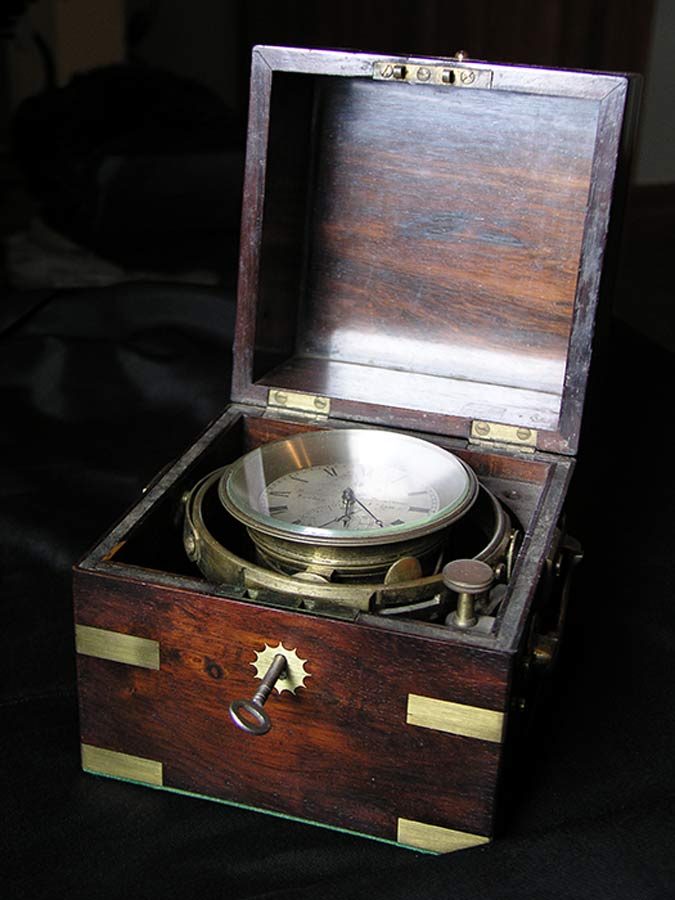
Navigators calculated longitude by measuring the difference between their local noon and noon in Greenwich, England. To stay on course, they needed precise timekeeping. In the second half of the 18th century, ships began carrying chronometers, which kept time very accurately. James Cook carried four on his second voyage to New Zealand in 1772–75. This example in Wellington Museum dates from about 1820.
Te whakamahi i tēnei tūemi
Museum of Wellington City and Sea
Photograph by Melanie Lovell-Smith
This item has been provided for private study purposes (such as school projects, family and local history research) and any published reproduction (print or electronic) may infringe copyright law. It is the responsibility of the user of any material to obtain clearance from the copyright holder.






Tāpiritia te tākupu hou